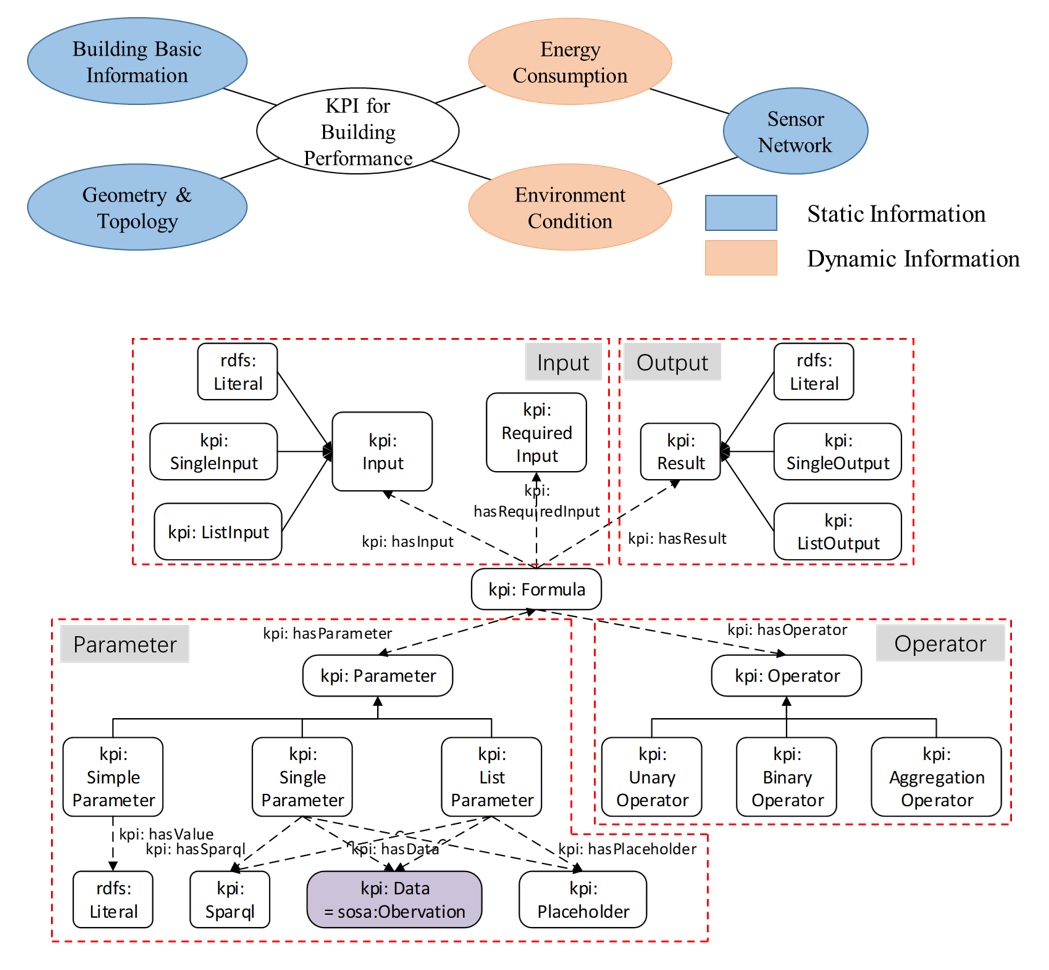Linking Data Model and Formula to Automate KPI Calculation for Building Performance Benchmarking
Energy Reports, 2021
Recommended citation: Zhang, Y.Y., Hu, Z.Z., Lin, J.R.*, Zhang J.P. (2021). Linking Data Model and Formula to Automate KPI Calculation for Building Performance Benchmarking. Energy Reports, 7, 1326-1337. doi: 10.1016/j.egyr.2021.02.044 http://doi.org/10.1016/j.egyr.2021.02.044
Abstract
Buildings consume a large proportion of global primary energy and building performance management requires massive data inputs. Key Performance Indicator (KPI) is a tool used for comparing different buildings while avoiding problems caused by heterogeneous data sources. However, silos of building and energy consumption data are separate, and the linkages between a KPI formula and different data sets are often non-existent. This paper develops an ontology-based approach for automatically calculating the KPI to support building energy evaluation. The proposed approach integrates building information from BIM and energy and environmental information collected by sensor networks. A KPI ontology is developed to establish a KPI formula, thereby linking static and dynamic data generated in the building operation phase. Each KPI can be defined by inputs, a formula and outputs, and the formula consists of parameters and operators. The parameters can be linked to building data or transformed into a SPARQL query. A case study is investigated based on the proposed approach, and the KPIs for energy and environment are calculated for a real building project. The result shows that this approach relates the KPI formula to the data generated in the building operation phase and can automatically give the result after defining the space and time of interest, thus supporting building performance benchmarking with massive data sets at different levels of details. This research proposes a novel approach to integrating the KPI formula and linked building data from a semantic perspective, and other researchers can use this approach as a foundation for linking data from different sources and computational methods such as formula created for building performance evaluation.

This work was funded by the National Key R&D Program of China (Grant No. 2017YFC0704200). Dr. Lin was also supported by the National Science Foundation of China (No. 51908323) and the Tsinghua University Initiative Scientific Research Program (No. 2019Z02UOT). This work emerged from the IBPSA Project 1, an international project conducted under the umbrella of the International Building Performance Simulation Association (IBPSA). Project 1 will develop and demonstrate a BIM/GIS and Modelica Framework for building and community energy system design and operation.

Leave a Comment